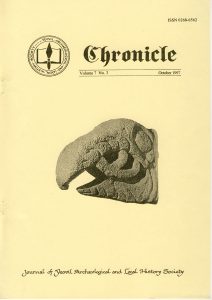1997 – pg62/3 – A Russian Experence

This article came from the Chronicle published October 1997. Pages 62-63
A RUSSIAN EXPERIENCE
Author: Harry Jelley
As I write in the summer of 1997, since it is expected that those visiting Russia are on a package holiday, with guided tours included, free spirits like my wife and I are not catered for. The famous places we visited were busy with bus loads of groups from Germany, Japan, USA, even Brazil. Russia is definitely not receptive to the itinerant tourist, the framework does not yet exist. At most important venues the ticket price for foreigners is double that for Russian citizens – which really makes one feel welcome! Naturally, there were many places of historical interest to see. I am not being flippant if I say that, if one can find a public toilet one has really found something historic. The guide books advise a personal supply of paper. However, the Metro systems in both Moscow and Saint Petersburg are superb, the trains run every few minutes, they are clean, cheap and frequently crowded. Most citizens of Moscow live in blocks of flats in the suburbs, do not own cars, and must use the Metro.
Whenever I visit a National Trust mansion, I cannot help pondering the contrast in living conditions between the original owner and the mass of people in the country. This feeling was increased in Russia, at such places as the Winter Palace at Saint Petersburgh with hundreds of corridors, galleries and rooms. At another palace, at Peterhof, the amount of gilding was beyond belief. No wonder there was a revolution.
We travelled in comfort on the overnight sleeper to Saint Petersburgh and back but we were able to see the poverty in the countryside away from the cities. Apparently, for the fifty years after the war (under Communism), there was almost no maintenance of public buildings. Following the destruction of the last war, the rebuilding of Leningrad (the modern Saint Petersburgh) was a miracle in itself. There is, however, a chilling side to this. We walked around, but were not allowed inside, the State University in Moscow which is one of six massive ‘Gothic’ buildings in the city constructed at the behest of Stalin after the ‘great Patriotic War’. These, and other buildings, were constructed by slave labour. Many of the slaves were German prisoners of war who were subject to reprisals by the Russians for those Russian prisoners of war taken by the Germans who did not return home. The German prisoners were allowed no mail home and were, literally, worked to death. Of the millions captured, only a few thousand were repatriated. They died anonymous, sad, unrecorded deaths and I understand that their remains are sometimes found during repair work on these buildings.
From the windows of our son’s top storey flat we could see the onion domes of the Kremlin, Saint Basil’s church and a panoply of other golden spires and domes. The Kremlin is a fortress bounded by a high red wall, but within the spacious interior are beautiful churches, diverse buildings and gardens. Red Square by comparison, with Lenin’s Tomb, where tanks and missiles used to parade passed the Politbureau, seems smaller than one would imagine.
Both towns have many impressive buildings of the 18th and 19th centuries, many of which are now being rapidly restored. Our son is of the opinion that within, say, five years, central Moscow will be one of the beauties of Europe. For the present, it still has its dark side. The Mafia is evident. We saw no shooting but did see several of their stretched limousines, with blacked out windows and attendant vehicles racing alongside through the town. My dear wife is more adaptable than I and she enjoyed our trip to Russia. I found it intensely interesting, fascinating, but something to be endured.